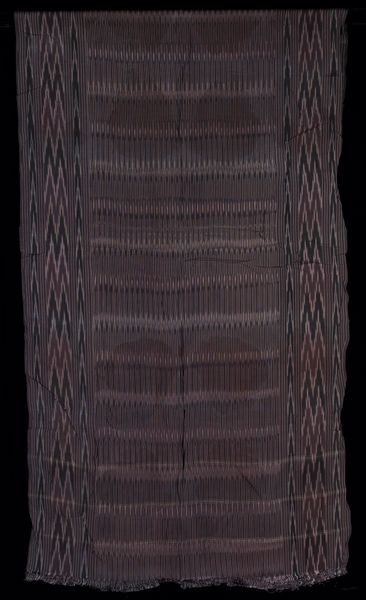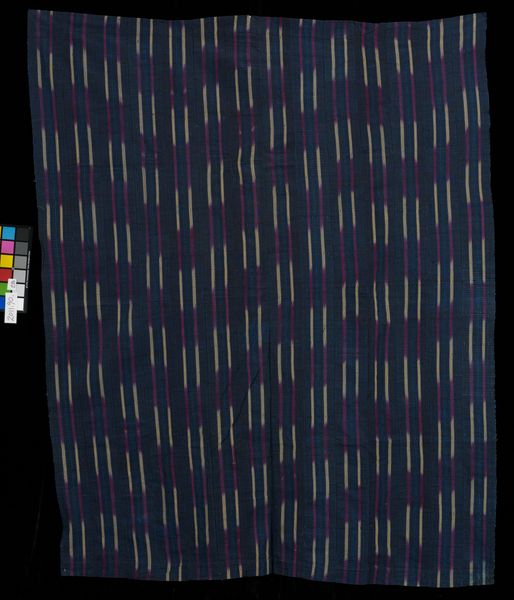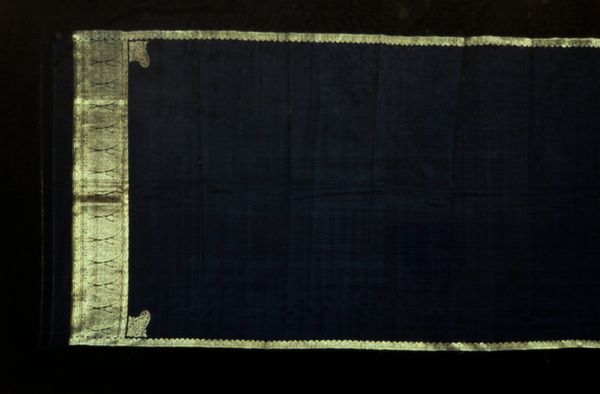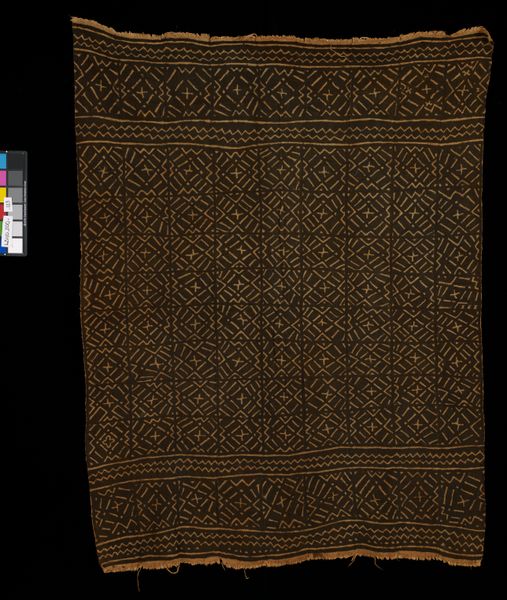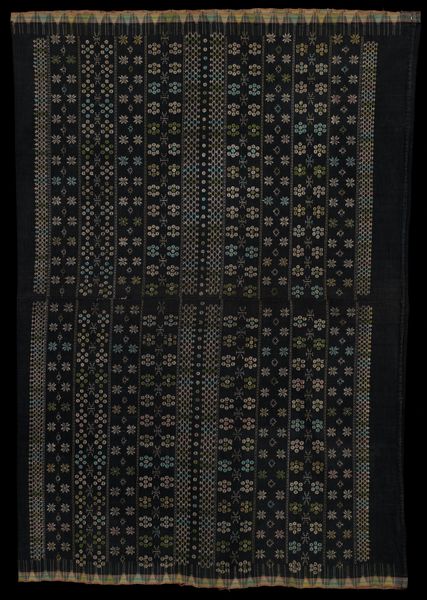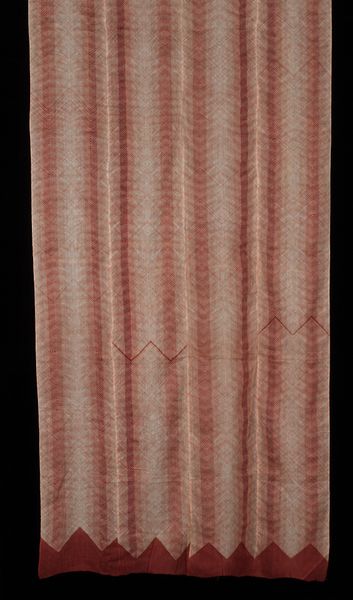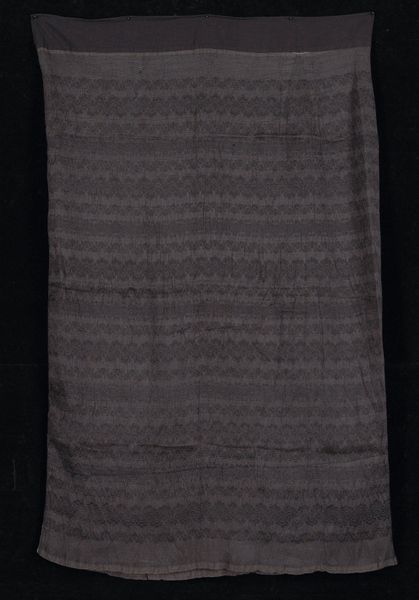
panel, silk, textile
#
african-art
#
panel
#
silk
#
textile
#
abstract
#
geometric
#
line
#
yoruba-art
#
monochrome
Dimensions: 70 3/4 x 52 in. (179.71 x 132.08 cm)
Copyright: Public Domain
Curator: What a fascinating textile! This is a Yoruba panel, believed to have been created around the 20th century. It is now part of the collection at the Minneapolis Institute of Art. Editor: My first impression is a sort of austere elegance. The silk seems to absorb light, making the geometric patterns appear almost ghostly. There's a definite sense of solemnity. Curator: The monochrome palette certainly contributes to that feeling. The repeating motifs—horizontal lines, crosses, and other geometric shapes—suggest a deeper, perhaps symbolic, meaning within Yoruba visual language. The choice of silk is also significant; it implies prestige and trade connections, wouldn't you agree? Editor: Absolutely. The use of silk points to an elite context. Textiles often served as status symbols, demonstrating wealth and influence. Were these patterns linked to particular families or social groups? Curator: That's quite probable. Yoruba textiles often function as visual records, conveying social status, religious beliefs, and historical events. While the precise meanings of these geometric forms are sometimes lost to time or require specialist knowledge to interpret, their consistent presence reveals an enduring visual code. They connect people to cultural memory and to the ongoing flow of culture. Editor: The grid structure of the panel, though subtle, provides another layer to consider. It suggests an ordered system of knowledge or representation, possibly influenced by religious or political frameworks prevalent at the time. One wonders who commissioned this piece, and how it might have been used publicly or privately. Curator: Excellent point! We need to consider its display, its usage and what institutional or domestic space it would have originally occupied to further unpack the historical narratives imbedded within its design. It makes me reflect upon our place within its long trajectory; how do we, as 21st-century viewers, understand its legacy and import within different cultural narratives. Editor: Looking at this Yoruba panel makes you wonder about all the historical shifts, trades and exchanges encoded into something so seemingly simple, so restrained. It is an object, but it's also an echo chamber. Curator: A powerful reminder that even seemingly abstract forms can be deeply embedded with cultural and social significance.
Comments
No comments
Be the first to comment and join the conversation on the ultimate creative platform.

